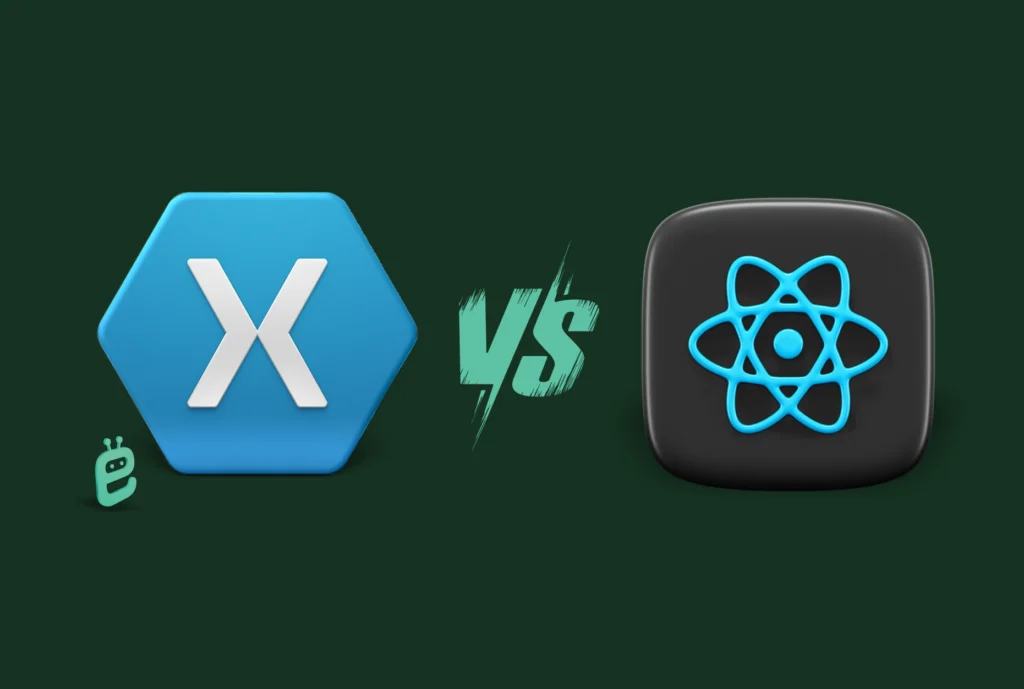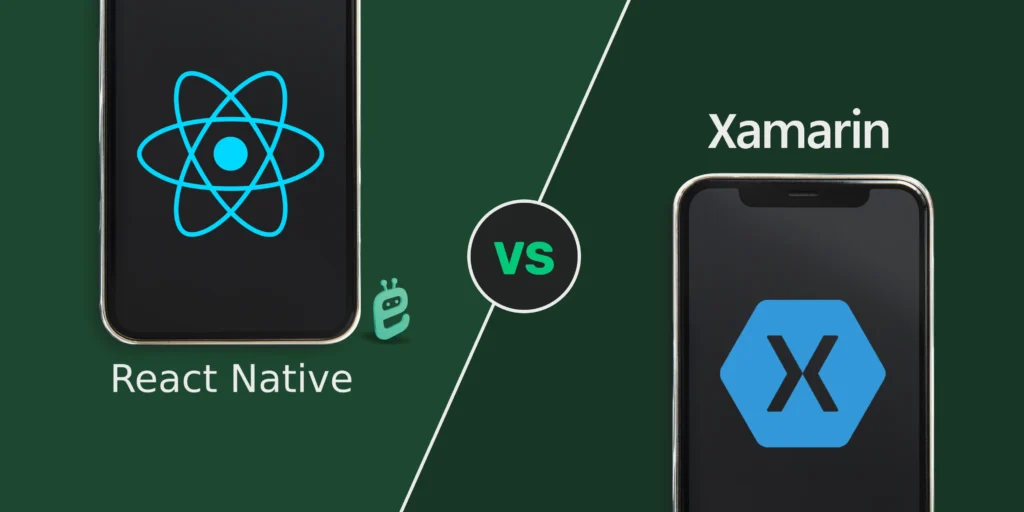In the sector of mobile app development, two famous frameworks have received full-size interest: Xamarin vs React Native. These frameworks provide developers with the potential to create cross-platform cellular programs, letting them write code once and install it on multiple platforms.
Introduction
Xamarin is a framework owned by Microsoft that allows developers to construct local cell apps using C# and the.NET framework. With Xamarin, builders can leverage their present knowledge of C# to create performant and visually attractive programs for iOS, Android, and Windows gadgets.

On the other hand, React Native is a JavaScript framework developed by Facebook. It allows builders to build native mobile apps with the use of JavaScript and React, a popular JavaScript library for building user interfaces. React Native presents a bridge between JavaScript code and local platform components, resulting in distinctly green and responsive programs.
Both Xamarin vs React Native offer advantages in terms of code reusability and time efficiency. With those frameworks, builders can write code as soon as possible and install it on a couple of systems without compromising on overall performance or user experience.
In this blog, we will delve deeper into the concepts in the back of Xamarin vs React Native, exploring their similarities, variations, use instances, and blessings. Whether you are a developer seeking to select among these frameworks or inquisitive about extra information about cross-platform app development alternatives, this segment will provide you with precious insights into Xamarin vs React Native.
Pros and Cons of Xamarin for Cross-Platform Development
Xamarin, a famous cross-platform improvement framework, has numerous blessings and drawbacks for developers. Let’s explore the pros and cons of using Xamarin for cross-platform development.
One of the key advantages of Xamarin is its use of the C# programming language. As C# is extensively adopted and has a large developer network, it offers developers a familiar and powerful language to work with. This reduces the learning curve for those already talented in C#, enabling them to quickly build apps for a couple of platforms.
Another benefit of Xamarin is the potential to percentage code among exclusive systems. With a shared codebase, developers can write as soon as possible and deploy throughout a couple of structures, inclusive of iOS, Android, and Windows. This not only saves time but also ensures consistency across distinctive versions of an app.
There are some drawbacks to not forgetting when using Xamarin. One problem is overall performance. Since Xamarin makes use of a shared codebase method, it can no longer offer the same degree of overall performance as local app improvements on each platform. While upgrades have been made to this location over the years, a few overall performance trade-offs might also still exist.
Xamarin can also face boundaries when it comes to accessing platform-unique functions, or APIs. Although Xamarin offers bindings for many native APIs, there may be instances where platform-specific functionalities aren’t quite simply available or require additional effort to implement.
Xamarin offers the benefit of leveraging the C# programming language and enabling code sharing across a couple of structures. However, capacity downsides consist of capacity overall performance exchange-offs in comparison to local improvement and obstacles in getting access to platform-specific functions or APIs. Ultimately, deciding on Xamarin for cross-platform improvement relies on factors that include challenge requirements and developer understanding.
Pros and Cons of React Native for Cross-Platform Development
React Native has won a reputation as a JavaScript framework for cross-platform development. It has numerous advantages but also has its limitations. Let’s take a better look at the pros and cons of using React Native for cross-platform development.
One of the major blessings of React Native is its potential to create native-like performance on both iOS and Android structures. By leveraging the energy of JavaScript, builders can construct excessive-performance cell programs with a single codebase. This saves effort and time in comparison to developing separate apps for each platform.
Another advantage of React Native is its warm reloading feature. This lets builders make changes in real time without having to rebuild the whole software. It appreciably speeds up the development process and enhances productivity.
There are also some drawbacks to remember when using React Native. One limitation is that not all local features are easily available in React Native libraries. In some instances, developers can also need to jot down custom local modules or depend upon 0.33-party libraries to access specific device functionalities.
While React Native offers a wide range of community-supported additives, it may no longer have as extensive a library environment as its local counterparts. This method suggests that certain niche functionalities may require extra effort or custom development.
React Native presents numerous benefits for cross-platform improvement, including native-like overall performance and a warm reloading feature. However, it also has obstacles in terms of accessing certain device functions and capability gaps in library aid for specialized functionalities. Careful attention must be given to these pros and cons before deciding whether to apply React Native to your next cross-platform undertaking.
Comparison of Xamarin vs React Native: Performance and User Interface
When it comes to evaluating the overall performance of Xamarin vs React Native, there are several elements to not forget, including the rendering and UI components’ overall performance.
Xamarin is understood for its local overall performance as it permits developers to build programs using the local language and APIs of every platform. This method means that Xamarin apps can take full advantage of the underlying platform’s talents, resulting in speedy and green overall performance.
On the other hand, React Native makes use of a bridge to communicate between JavaScript code and native components. While this technique permits cross-platform improvement, it can introduce some overhead in terms of overall performance compared to Xamarin.
In terms of rendering, React Native uses a digital DOM (Document Object Model), which facilitates optimizing the rendering procedure via the most effective updating of components that have been modified. This can cause improved performance, especially when managing complicated UI structures.
Xamarin utilizes native UI controls furnished with the aid of every platform, ensuring continued integration with the underlying gadget. This can bring about smoother animations and interactions as compared to React Native’s JavaScript-primarily-based rendering approach.
It’s important to note that both Xamarin vs React Native have made massive improvements over the years in terms of overall performance optimizations. Ultimately, deciding among them needs to depend on your specific task requirements, improvement crew knowledge, and target platforms.
Comparison: Language and Framework Ecosystems
When evaluating the language and framework ecosystems of C and JavaScript, it is critical to keep in mind their respective language features and network help.
C, a low-level programming language, is known for its simplicity and performance. It presents direct access to hardware resources, making it ideal for gadget-stage programming. However, C lacks a few contemporary language capabilities, such as rubbish series and item-oriented programming (OOP) capabilities.
On the other hand, JavaScript is a high-degree scripting language ordinarily used for Internet development. It offers an extensive range of integrated functionalities that make it easy to create interactive web programs. JavaScript supports OOP standards and has robust support for asynchronous programming via its event-pushed model.
In terms of community aid, JavaScript has a large developer community because it recognizes web improvement. This means there are ample sources available, which include tutorials, libraries, frameworks (e.g., React.Js), and energetic online boards wherein developers can search for assistance or proportional understanding.
While C might not have as large of a network as JavaScript, it nevertheless maintains strong aid within unique domains, together with embedded structures or running device development. The C-preferred library offers critical capabilities for various responsibilities, and there are various open-supply tasks built using C that developers can leverage.
The choice between C and JavaScript depends on the particular requirements of the challenge. If low-degree control over hardware assets is essential or if overall performance optimization is a concern, then C may be favored. However, if internet development or developing interactive applications is the point of interest with access to massive libraries and frameworks, together with a colorful network aid community, then JavaScript would be the more suitable preference.
Comparison: Integration with Hardware Features and APIs
When it comes to integrating with hardware functions and APIs, both Xamarin vs React Native provide strong competencies. However, there are a few differences that are worth considering.
Xamarin is a cross-platform improvement framework that permits developers to jot down code in C# and share it across more than one platform. It offers seamless integration with tool APIs, inclusive of digicam, geolocation, sensors, and more. Xamarin leverages the native APIs of every platform, making sure that developers have access to all the capabilities and functionalities supplied via the underlying working systems.
React Native is a JavaScript framework developed by Facebook. It additionally supports integration with tool APIs like camera and geolocation, but it does so via third-birthday celebration libraries or modules. These modules act as bridges between the JavaScript code in React Native and the local APIs of the respective structures.
Both Xamarin vs React Native offer considerable documentation and community support for integrating with hardware capabilities and APIs. However, Xamarin’s approach of making use of native APIs directly may also provide a greater seamless experience for builders who require deep integration with device functionalities.
The choice between Xamarin vs React Native for hardware function integration depends on factors that include development choices, mission requirements, to-be-had assets (such as developer expertise), and a preferred degree of management over native API access.
FAQS
Xamarin: Xamarin is a cross-platform mobile app development framework owned by Microsoft. It allows developers to use C# and the .NET framework to build native apps for iOS, Android, and Windows.
React Native: React Native is an open-source framework developed by Facebook. It enables the creation of native mobile apps using JavaScript and React.
The primary difference lies in the programming languages used. Xamarin employs C# and .NET, while React Native uses JavaScript and React.
Yes, both Xamarin and React Native allow the integration of native code when necessary. Xamarin offers direct access to native APIs, and React Native has a bridge that facilitates communication between JavaScript and native code.
Conclusion
In the end, deciding on the proper framework for your cross-platform mobile app development needs is vital for the success of your undertaking. By cautiously evaluating the standards that are essential to you, together with performance, ease of use, network assistance, and price effectiveness, you can make an informed choice.
By carefully comparing these factors and choosing a framework that aligns with your desires, you may ensure a smooth cross-platform mobile app development technique and supply extraordinary apps that meet consumer expectations.
